
Smart lighting with EzloPi!
Smart street lights
The EzloPi smart devices provide automation through simple, customizable use with our open-source EzloPi platform, making daily life easier and improving human-machine interactions.
Before moving into this example, it is very important to know about the device registration, provisioning and converting the ESP32 device into an EzloPi device along with knowledge of Web Flasher, MiOS Mobile Application for Android/iOS and the MiOS Web Application.
1. About this example
The smart street lights system project uses the EzloPi device to automate street lighting based on the environmental conditions. This project incorporates an MB1013 sonar sensor to detect the presence of vehicles or pedestrians, while the LM393 photoresistor (LDR) module measures ambient light levels. When low light conditions are detected by the LDR, the system prepares to activate the streetlights. However, the lights are only switched on when the sonar sensor identifies motion, ensuring energy-efficient lighting. This dynamic, sensor-driven control minimizes power consumption and reduces unnecessary light pollution, making it ideal for urban and rural settings.
3. Circuit Diagram & Interface
The following components are required for interfacing with the EzloPi device:
- ESP32 as an EzloPi smart device.
- MB1013 sonar sensor module.
- LM393 Photoresistor Module(LDR).
The wiring diagram for the ESP32 30 pin is represented as below:
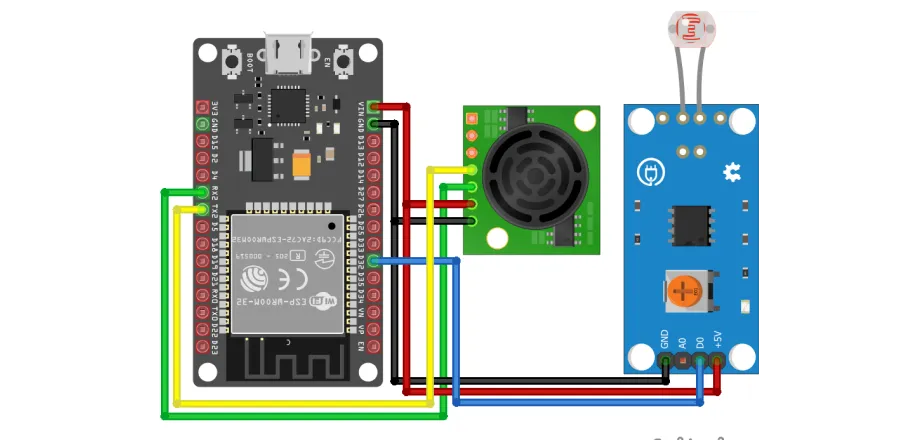
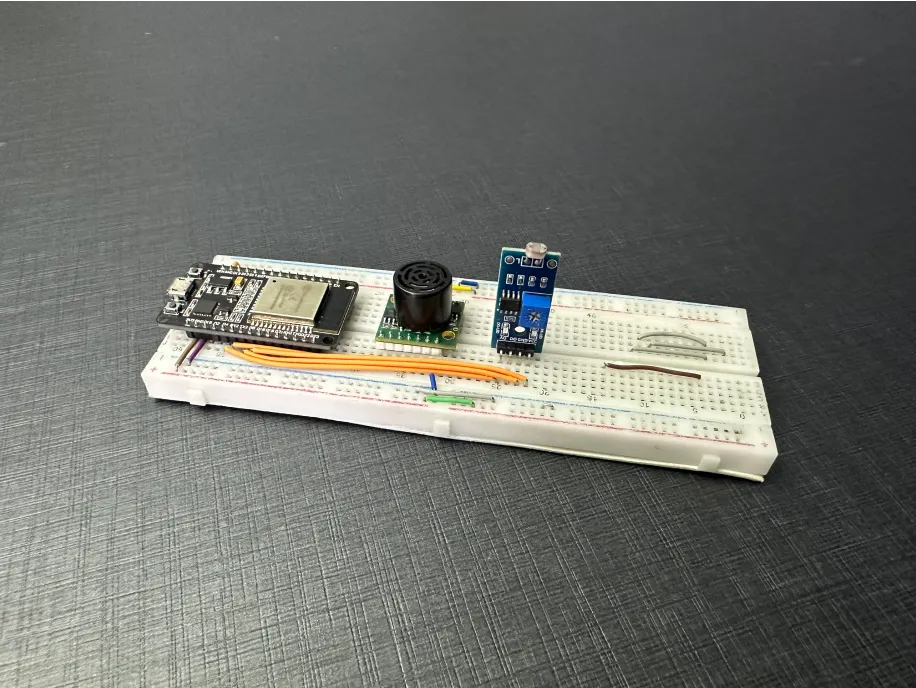
The following connections are made in order to complete the circuit setup:
From ESP32 to the MB1013 module:
| ESP32 | MB1013 |
| VIN | VCC |
| GND | GND |
| D16 (RX) | Tx |
| D17 (TX) | Rx |
From ESP32 to the LDR module:
| ESP32 | LDR |
| VIN | +5V |
| GND | GND |
| D32 | D0 |
4. Interfacing the MB1013 Sonar sensor module with LDR using the EzloPi Web Flasher
1. Set up your device/hardware by visiting config.ezlopi.com

- Log in using the credentials which you just set earlier while signing up.
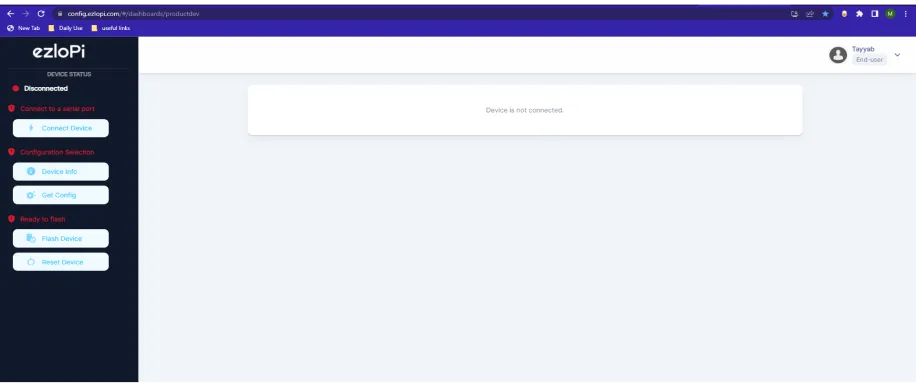
- Now, click on the Connect Device button and a pop-up window will appear.

- Now, select COM Port to which your ESP32 device is connected. In our case, the COM3 port is used.
Click Connect
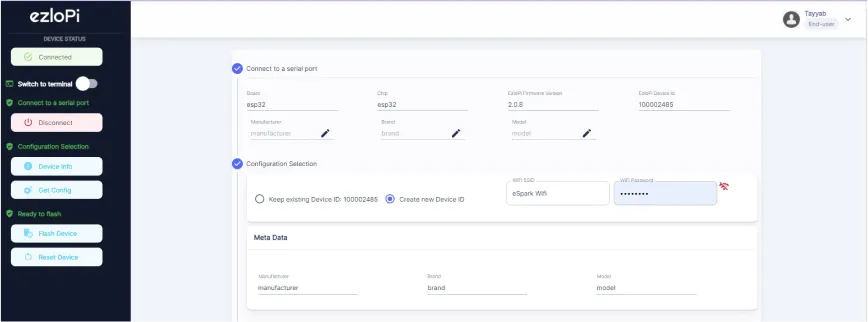
- If you are new to this and it's your first time configuring, select Create new Device ID. Click on the Configure Wifi button. Enter Wifi SSID and Wifi Password.
- In the Device Configuration, tab click on UART.
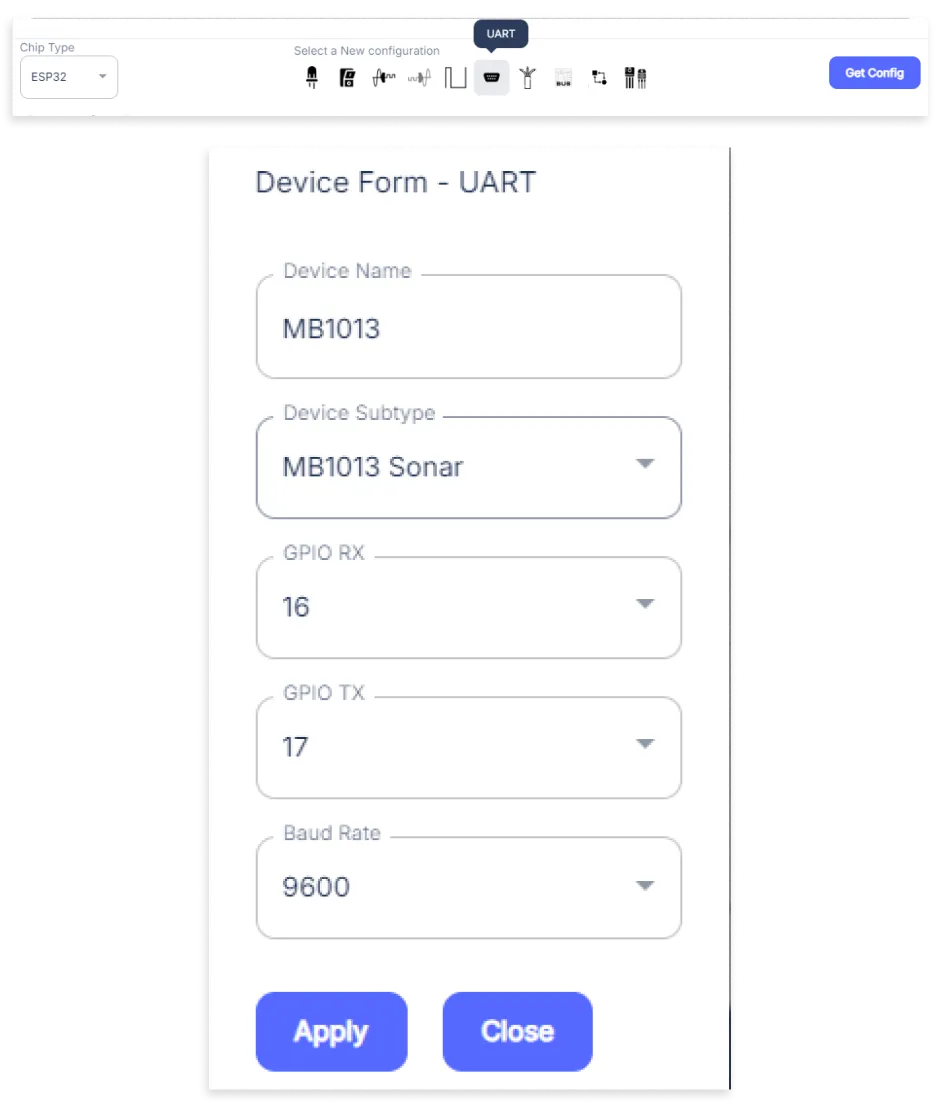
- A window will open for inputting the following parameters:
- Set a Device name of your choosing. In our case, we set it to Sonar Sensor.
- Set Device subtype to MB1013.
- Set GPIO RX to 16.
- Set GPIO TX to 17.
- Set Baud Rate to 9600.
- Then Click Apply Button.
- Again, In the Device Configuration, tab click on Digital Input.
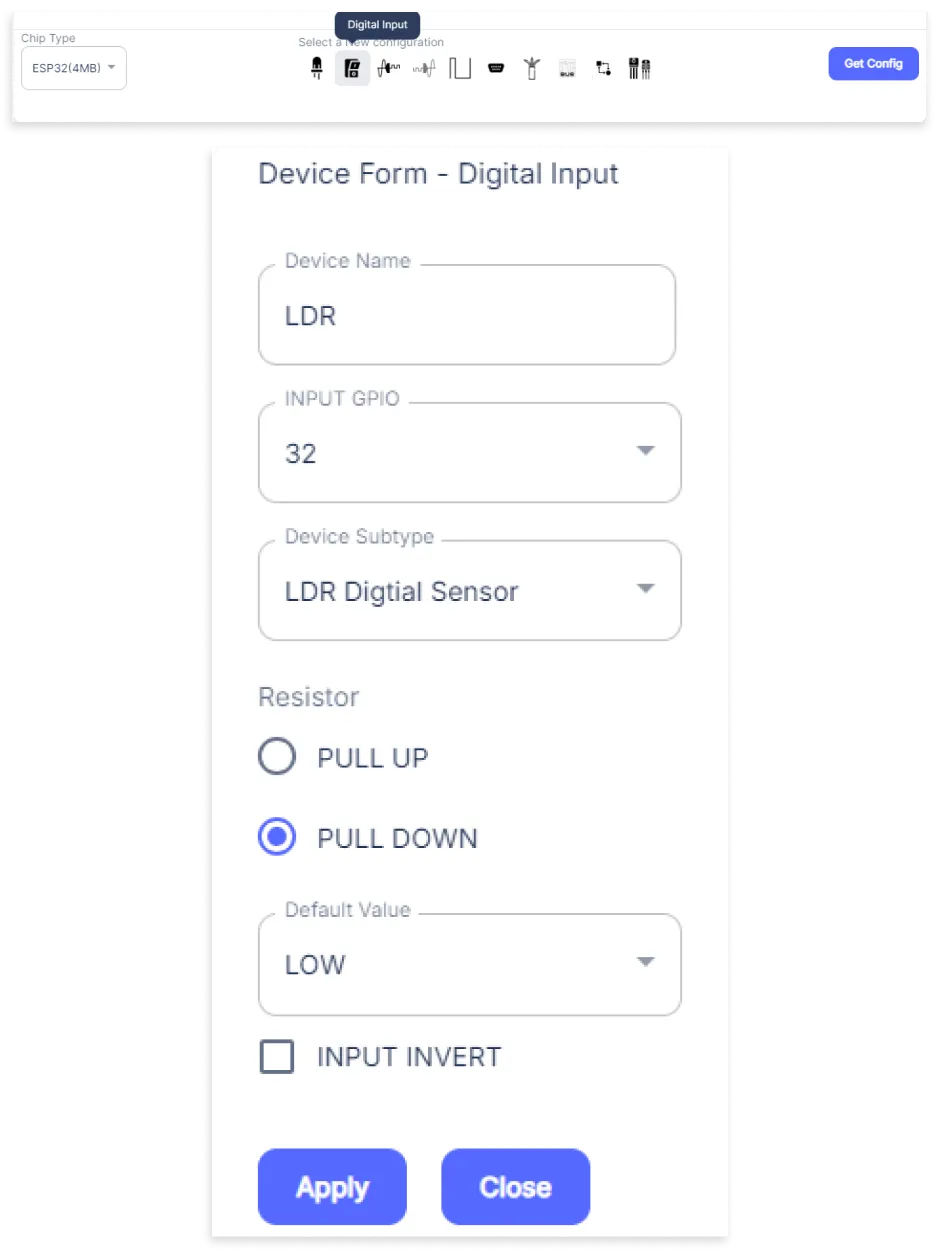
- A Digital Input window opens for inputting the following parameters:
- Set a Device name of your choosing. In our case, we set it to LDR.
- Set INPUT GPIO to 32.
- Set Device subtype to LDR Digital Sensor.
- Set the Resistor to PULL DOWN.
- Then Click Apply Button
- After clicking the apply button you can see a table of your setting in the device configuration tab.
- Press the Flash Device button.
- A window will appear on the bottom right side of the screen displaying “Please press BOOT button while flashing begins.”
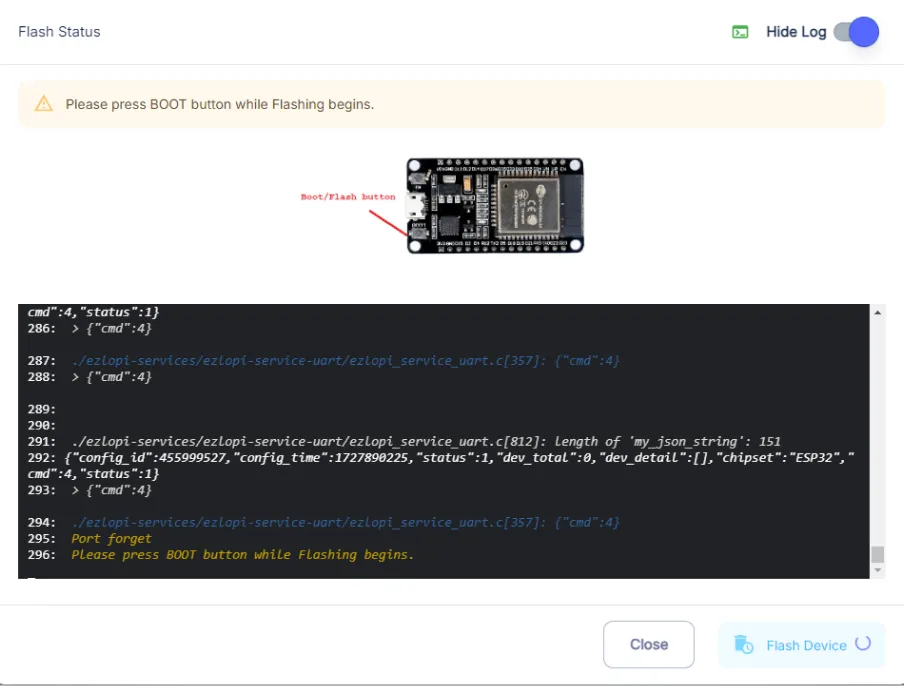
- Hold the BOOT button down until the next window appears on the bottom right side of the screen which says “Installation prepared. Please release the boot button now.”

- Release the BOOT button from your ESP32 when this pop-up on the bottom right window appears.
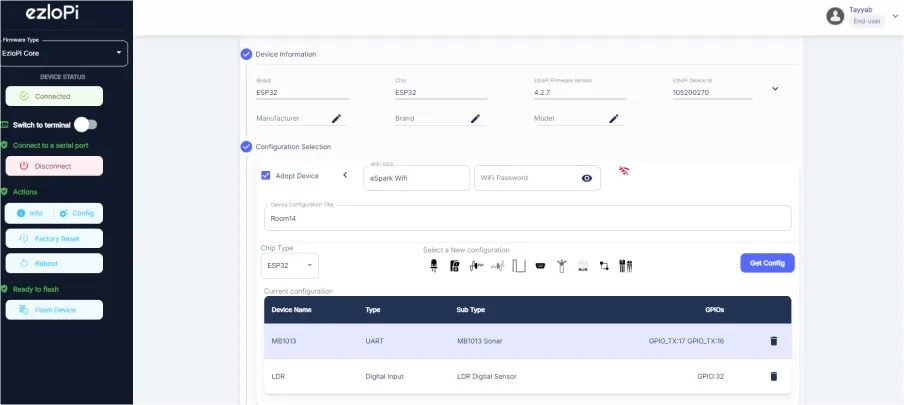
- After some time, a popup will appear saying Device Flashed Successfully! This means that your device has been set up successfully.
5. MiOS App
You can download the MIOS Android app from the Google Play Store and Apple App Store.
- After downloading the app, proceed to install the application and open it.

- Using the MIOS mobile application, create a new Ezlo Cloud account using the sign-up option. If you already have an account, you may proceed to log in.

- After successfully logging in, you will be able to see the number of controllers connected such as a lamp, fan, or any other device in the MiOS app. Tap on any controller of your desired ID:

- You will be able to see the status of your controller whether it is online or offline. Access the device dashboard, and tap the device. The following view of the dashboard will appear:
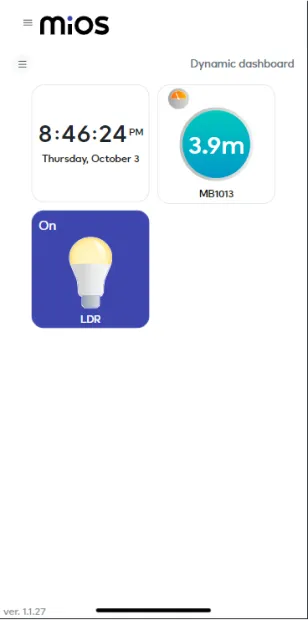
- Here, as seen in the MiOS mobile app above, we can see the MB1013 sonar sensor and LDR tiles. The above figure depicts the street light scenario where cars or people are moving on the road so the MB1013 measures distance of the objects from itself whereas LDR gives the indication of light. In above picture, the MB1013 sensor shows distance whereas LDR showing that there is light present.
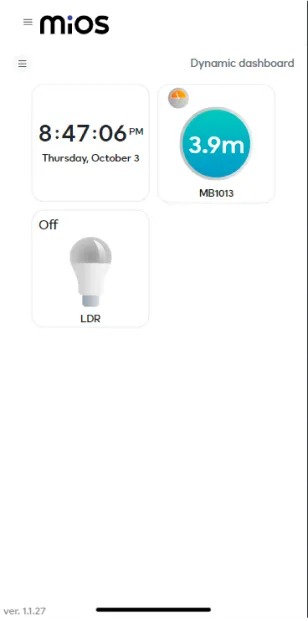
- Here, it can be seen that now LDR is turned because it depicts that there is less or no light whereas MB1013 shows distance from any object. By utilizing these sensors, we can control street lights easily and conserve energy.
6. MiOS Web Dashboard
- After configuring the controller with the EzloPi web flasher, head to ezlogic.mios.com

- Use the same credentials to log in that you used for configuring the controller with the web flasher.
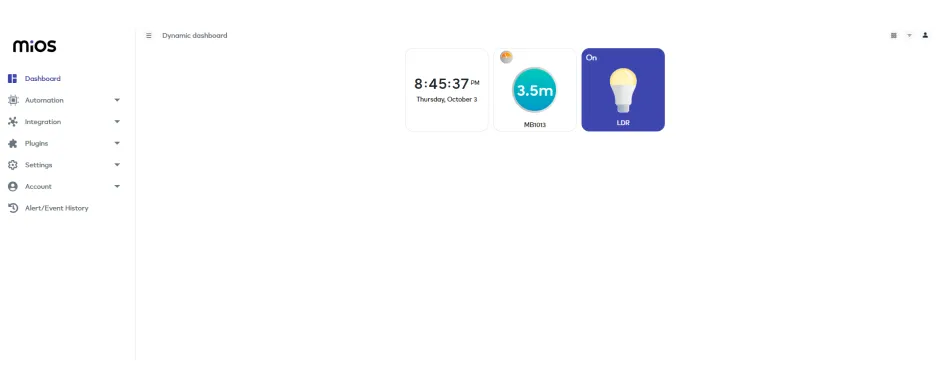
- Here, as seen in the MiOS web app above, we can see the MB1013 sonar sensor and LDR tiles. The above figure depicts the street light scenario where cars or people are moving on the road so the MB1013 measures distance of the objects from itself whereas LDR gives the indication of light. In the above picture, MB1013 sensor shows distance whereas LDR showing that there is light present.
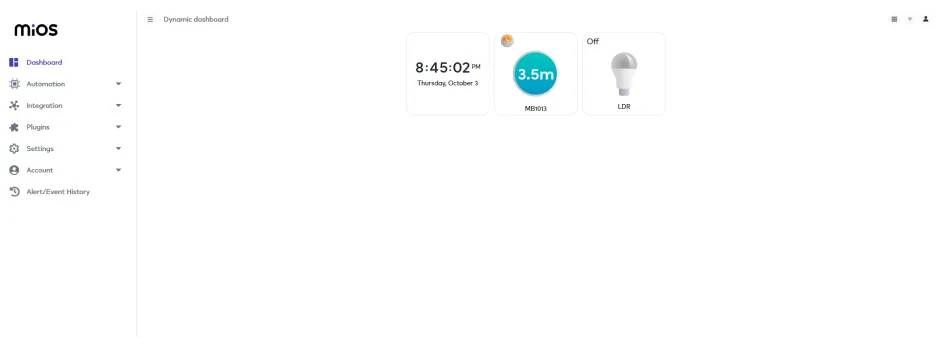
- Here, it can be seen that now LDR is turned because it depicts that there is less or no light whereas MB1013 shows distance from any object. By utilizing these sensors, we can control street lights easily and conserve energy.

eZlopie Products A single-channel 5V relay module $00.00

eZlopie Products Momentary switch $00.00

eZlopie Products Level Shifter Module (BSS138) $00.00

eZlopie Products ESP32
$00.00

eZlopie Products AC Lamp and Holder
$00.00












